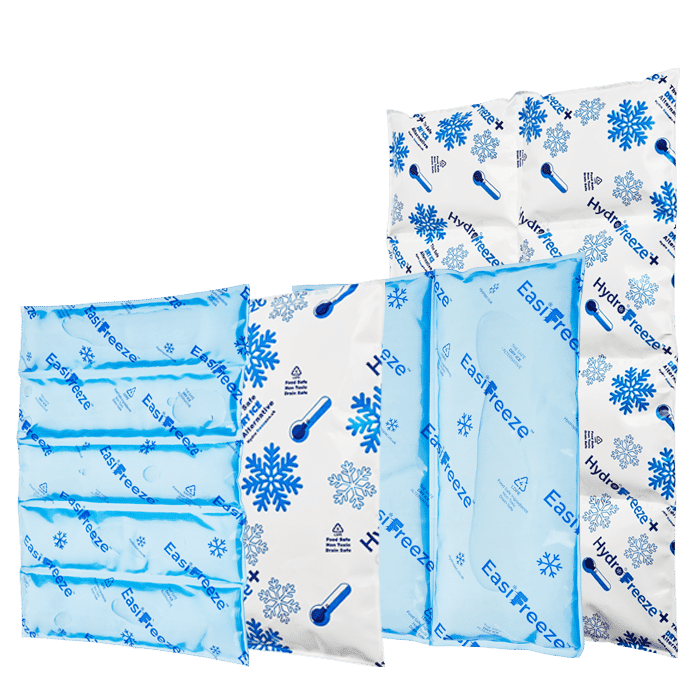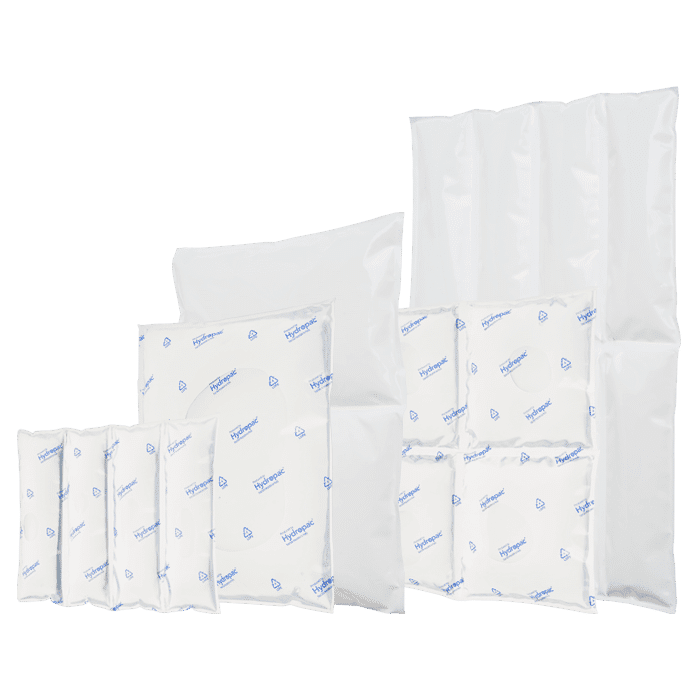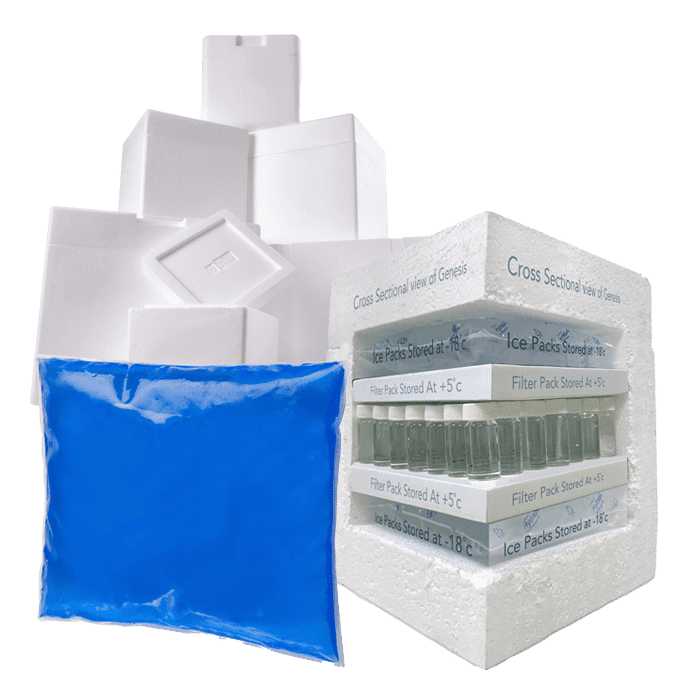FAQ of chilled food shipping
The process of shipping chilled goods has slightly different requirements to shipping frozen goods (you can read more about this here: FAQ of Frozen Food Shipping). The ideology is similar – chilled goods, like frozen, need to be kept secure and at a constant temperature from start to finish, but, unlike frozen goods, the temperature requirements vary more depending on what it is that being shipped. Most (not all) frozen goods need to be kept at -15°C or colder, but chilled goods need to be kept between -1°C and -5°C as a rule, otherwise they will freeze.
Custom chilled solutions for you
Hydropac offers every customer a customized solution for chilled and conditioned shipping. For example, we help a customer with limited freezing capacity to deliver gel packs frozen and ready to use, and we can manufacture almost all shapes and sizes of cooling elements. As a customer, you come first: we are here to help you.
Ideal chilled shipping temperatures of different goods
Chilled meats
Chilled meats are very perishable, as they have a high water, protein and fat content. It doesn’t take long for bacteria growth to accelerate once temperatures become too high but keeping the temperature cooler slows this down.
As an ideal, all fresh meat should be carried at a chilled temperature range between 0°C and +5°C, however certain meats have more specific requirements. Beef for example, may see formation of ice crystals if it goes below +1.7°C. Well vacuumed chilled beef should not go above +2°C at the very most, as it will then start to degrade.
Chilled fish
Chilled, raw fish should be kept at 0°C. this is classed as the melting temperature of ice. If fish goes below this, it will start to freeze, and if it goes any warmer, it will start to degrade. Bacteria activity will also increase, which in turn can lead to the risk of food poisoning for the end user.
Fruits and vegetables
Fruits
- Some fruits do not require a chilled shipping solution, such as bananas and apples.
- Other fruits, such as berries, grapes, pears and plums, do need to be shipped at 0°C.
Most fruits will freeze if they are held lower than 0°C. If they are exposed to temperatures warmer than +5°C, they will start to ripen and spoil quicker than if kept chilled.
Bananas are a notable exception to this, as bananas will keep fresher for longer if kept between 13.3°C-14.4°C. If kept below this, they will start to chill at temperatures that other fruits would find too warm.
Vegetables
The majority of vegetables should be kept at 0°C. Examples include carrots, broccoli, cauliflower, lettuce and onions. This temperature helps them to remain fresher for longer.
If vegetables become too cold, they will freeze in the main quite quickly, as most vegetables have a high-water content. If they come too warm, they will start to spoil.
Dairy products
Dairy products are highly perishable and even mild fluctuations in temperature can cause spoilage and bacteria growth.
- Milk – should be chilled as quickly as possible once expressed from the animal, and kept at a temperature range of 1°C-4°C (4°C being the highest maximum temperature, 3°C is more ideal).
If milk becomes too warm, then bacteria and other pathogens start to grow and multiply very quickly. This can cause issues with spoilage, as well as curdling.
- Yoghurts – like milk, yoghurts should be kept at a certain temperature range; in this case, between 1°C and 3°C.
If yoghurt becomes too warm, bacteria will start to grow. In addition, the yoghurt may become watery with clumps.
- Cheese – Cheese has more tolerance than other dairy products, it can be kept between 1°C and 7°C
If cheese becomes too warm, it may start to melt. If left in open air, it may also dry out and go crumbly. Some cheese, like parmesan or cheddar, have a lower moisture content and are more tolerant to heat or room temps than other, softer cheese, such as feta, brie or ricotta.
Packaging chilled goods
Chilled packaging solutions need to meet a certain set of criteria to be effective and keep the goods both secure and at a specified temperature range. These include:
- Robust to deal with any damages or stresses in transit
- Waterproof both inside and out, to deal with any leaks or breakages as well as adverse weather conditions
- Insulating, so they can maintain the interior temperature (alongside the chosen coolants) without major fluctuations.
As with any shipments, it’s best to put the heaviest items at the bottom, to save them crushing anything underneath. Also best not to overpack, as you will need to leave room for your desired coolants such as ice packs – these also add up in terms of weight.
If you are sending mixed goods, make sure there is no risk of cross contamination. This can be done in a few ways – use box separators, make sure the packaging of the goods is intact and original, and use packaging fillers to stop any breakages or leaks.
When can chilled foods be rejected by the end receiver?
Chilled goods can be rejected by the recipient under certain circumstances. These include:
- If the box/contents are damaged/spoiled
- If there has been cross contamination inside the packaging of goods that cannot mix.
- If the temperature range inside the packaging is outside of the specified parameters.
Checking a chilled food shipment before accepting
As with all shipments, the end recipient should check the delivered package(s) over thoroughly for any obvious signs of damage, pest infestation or tampering.
Once the exterior has been checked, the contents inside need to be reviewed.
- Firstly, the goods should be checked with a thermometer, to ensure the temperature inside is between the specified temperature range for the goods.
- There should also be a check to ensure there has been no cross-contamination if the goods inside are mixed – i.e. no mixing raw with cooked, for example.
- The goods themselves will show obvious signs of decomposition if the temperature has been too warm, especially meats or dairy. Obviously if the goods are frozen instead of chilled, the goods have been kept at too cold a temperature.
Sustainability Hydropac and CSR
Sustainability isn’t just a trend for us – it’s a promise. As we innovate, create, and lead, we keep our planet’s well-being at the forefront. With Hydropac, you’re not just preserving the quality of your cargo; you’re contributing to a healthier world.
Experience the power of sustainable temperature assurance with Hydropac – where excellence and environmental responsibility coexist for a brighter future.







